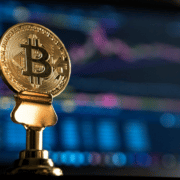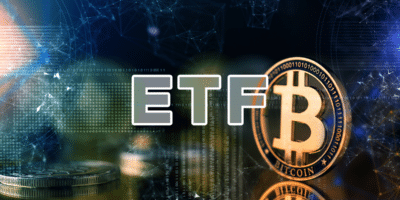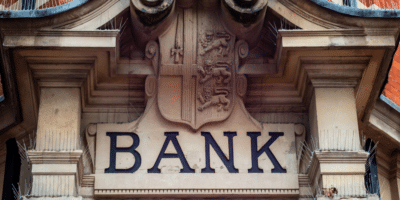Many experts advise starting your acquaintance with the stock market by buying ETFs, not stocks. The advantages are apparent: a lower entry threshold, less risk of a drawdown, and many securities in the fund, not just one.
But many invest in passive income because they need dividends on stocks, which funds usually don’t pay. So is it worth investing in ETFs?
In this article, we will go through the main features of ETFs, their pros and cons to make a choice more accessible for you.
What is an exchange-traded fund?
An ETF is marketable security: the attached price facilitates easy buying and selling. The exchange-traded fund objective is to track the performance of either a single or a combination investment instrument listed in the stock exchange.
The most common investment instruments tracked by ETFs include an index, commodity, and sector.
An exchange-traded fund behaves as a reflection of the total of its investment basket. ETF prices fluctuate throughout the day as the individual securities make up the fund move in the markets. They are therefore highly liquid compared to other investment instruments such as mutual funds. By being a basket of assorted investment securities, the expense ratio to invest in them is low. The ETF funds also attract relatively lower broker commissions compared to individual stocks.
The history of ETF
To understand the ETF market that now has a single fund boosting billions in assets under management, we need to know how they came to be.
- S&P 500
The first step in the ETF journey was the growth in the appetite for index investing. It involved the use of closed-end funds or trusts coupled to a particular asset type. The first of these index funds is John Bogle’s First Index Investment Trust in 1975, which tracked the S&P 500.
At inception, it had only $11 million assets under management, but by the time it passed in 2019, the index had evolved to the Vanguard 500 index, worth over $441 billion.
- TIPS35
The index funds evolved as the appetite for such investment instruments soared. The first modern-style ETF was thanks to the Toronto Stock Exchange that came up with the TIPS35, Toronto 35 Index Participation Units, in 1990.
The TIPS35 fund tracked the TSE-35 Index in the form of a warehouse-receipt base instrument. Three years down the line saw the birth of one of the most actively traded ETFs in the world, the “spider,” S&P 500 Trust ETF.
Although the first American ETF was launched in 1993, it took 15 years to manage the ETF to hit the market actively. According to ETFGI research, the ETF market has grown from a single fund to a global market of over 7100 exchange-traded funds. This number is bound to continue growing as more asset classes seek out the ETF structure to diversify and lower the cost of investing for potential clients.
How do ETFs work?
Investors have access to different market types based on the ETF types, which classified based on their underlying assets and hence the index they track:
- Commodity ETFs: invest in the commodity market such as oil, agricultural produce, and precious metals.
- Industry ETFs: track a particular industry and are made up of companies in the sector they follow, for example, banking, technology, energy, and finance.
- Bond ETFs: these ETF types track the performance of particular bonds, whether government, municipal, or corporate. These ETFs extend to other fixed asset security-based funds.
- Currency ETFs: they invest in currencies and track their value.
- Inverse ETFs: made up of derivatives and are used as an edge strategy against a decline in the index value.
- Leveraged ETFs: are short-term in nature and use derivatives offering leveraged assets for higher returns.
What are the top 10 largest ETFs providers?
The largest fund providers have different ETF types and include:
| Ticker | Name | AUM | Avg daily share volume (3mo) |
| SPY | SPDR S&P 500 ETF | $361,019,000.00 | 83,798,383 |
| IVV | iShares Core S&P 500 ETF | $276,333,000.00 | 4,235,170 |
| VTI | Vanguard Total Stock Market ETF | $238,085,000.00 | 4,377,733 |
| VOO | Vanguard S&P 500 ETF | $219,689,000.00 | 4,076,106 |
| QQQ | Invesco QQQ | $164,626,000.00 | 50,847,996 |
| VEA | Vanguard FTSE Developed Markets ETF | $97,730,000.00 | 9,622,307 |
| IEFA | iShares Core MSCI EAFE ETF | $90,598,000.00 | 8,406,096 |
| AGG | iShares Core U.S. Aggregate Bond ETF | $86,687,000.00 | 6,058,719 |
| VWO | Vanguard FTSE Emerging Markets ETF | $79,700,500.00 | 10,648,232 |
| IEMG | iShares Core MSCI Emerging Markets ETF | $79,582,400.00 | 12,006,502 |
To be part of the ETF market, one has to go through a brokerage firm. These firms come in the traditional call and place agencies and the modern online brokers. Due diligence is of utmost importance to ensure the broker chosen operates within the confines of the law by providing they possess the requisite licenses.
Through brokers, investors can either invest in the ETF funds or trade-in their CFDs, contract for differences. ETF investments involve having a stake in the ETFs and their ultimate value, while CFD involves investor speculation on the change in price or a fund.
ETF investing: pros and cons
With the knowledge of the ETF fund’s history, types, and how they trade, the next question comes up: “Are ETFs a good investment?”
The truth is that ETFs are a good investment for both beginners and expert investors because:
- Diversification: ETFs provide an avenue for investors to be part of either different industries or own other stocks in the same industry under one investment instrument. Owning the same diversified portfolio using individual investment assets would require significantly more financial muscle. Management of personal assets would also be much more difficult.
- Transparency: unlike other investment instruments, ETF holdings are updated to the public domain daily. The use of online brokers also ensures an investor has visibility on the performance of their portfolio.
- Relatively cheap: compared to other investment assets, ETF has a relatively low expense ratio. Besides, most of the ETF brokers have waived their commissions when trading with ETFs.
- Tax benefits: ETFs offer investors tax breaks compared to other investment choices since they only attract tax when sold.
- High liquidity: like the stocks and assets they are based on, funds are highly liquid compared to other basket assets. The high liquidity allows for intraday trading hence more control over the investment.
Like all investment instruments, ETFs are not a fit-all situation asset. Investing in them comes with associated challenges:
- Trading costs: not all brokers have waived their commissions. ETFs may therefore incur extra charges to their expense ratio depending on a particular broker.
- Higher exposure: the basket nature of ETFs exposes investors to asset classes they might not initially be comfortable with if investing individually.
Summary
ETFs are an excellent way for investors to get a diversified portfolio at low costs and minimal capital requirements. The exponential growth of the ETF market only highlights the appetite and confidence that the investment community has in this market despite being blamed for high volatility.
However, investing in them should be carefully considered, just like any other investment, because there is a probability of losing money in the ETF market.























Comments